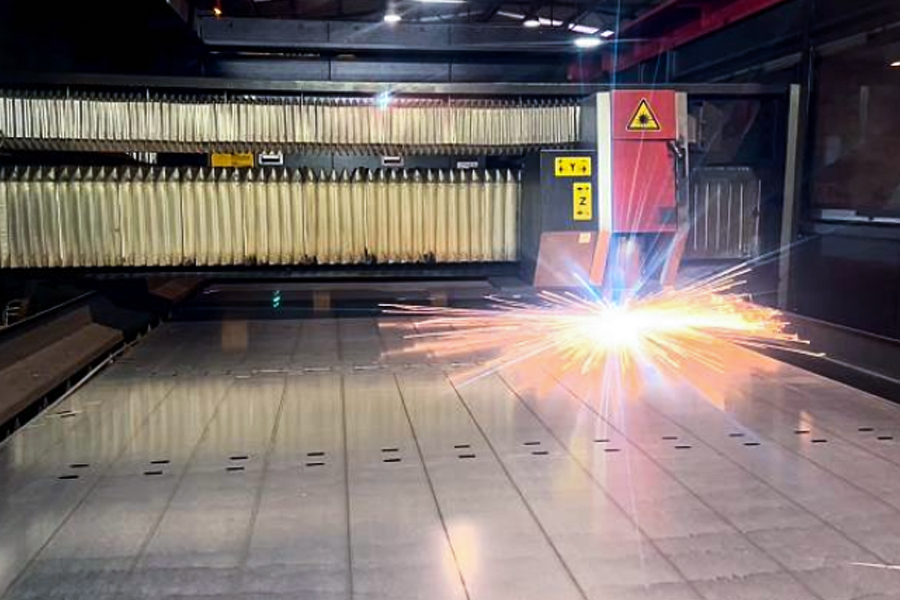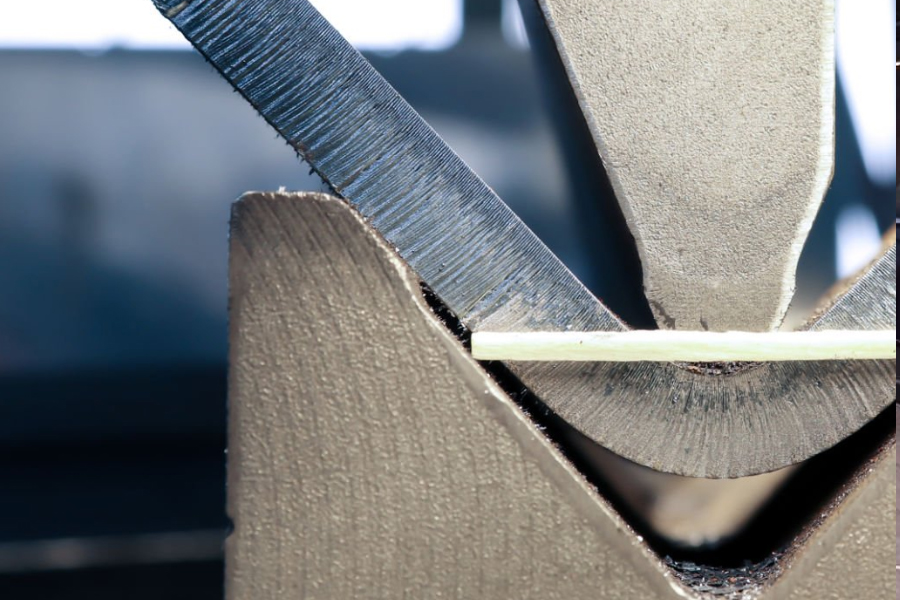
Analysis of the core technology and advantages of sheet metal processing in the manufacturing of medical sheet metal parts
Release time:2025-04-24 Click:11In the field of medical devices, medical sheet metal parts are key structural components of the equipment, and their manufacturing accuracy and reliability directly affect the performance of medical equipment. Sheet metal processing technology, through the organic combination of multiple precision processes, gives medical sheet metal parts characteristics that meet strict medical standards. This article will deeply analyze the core processes in the manufacturing process of medical sheet metal parts and the unique advantages brought by these processes.
Laser cutting: The starting point for high-precision processing of medical sheet metal parts
Laser cutting technology plays a vital role in the manufacturing of medical sheet metal parts. Compared with traditional mechanical cutting methods, laser cutting has extremely high precision, and the error can be controlled within 0.05 mm, which is crucial for medical parts with strict dimensional accuracy requirements.
Laser cutting focuses a high-energy-density laser beam on the surface of the metal sheet, instantly melts and vaporizes the material, and uses auxiliary gas to blow away the slag to form a neat incision. This non-contact processing method avoids the deformation problem caused by tool wear and mechanical stress in traditional mechanical cutting, and is particularly suitable for the processing of commonly used medical metal materials such as stainless steel and aluminum alloy. For some complex geometric shapes, such as arcs and special-shaped holes, laser cutting can be easily achieved, greatly improving the design freedom of medical sheet metal parts.

Bending: giving medical sheet metal parts precise three-dimensional structures
Bending is a key process for converting flat sheet metal into a specific three-dimensional shape. In the manufacture of medical sheet metal parts, the bending process requires extremely high precision and stability to ensure the matching accuracy between components and the rationality of the overall structure. When designing bending, engineers need to fully consider factors such as the mechanical properties of the material, the bending radius, and the bending angle, and use professional bending equipment and molds to achieve precise forming.
Take the shell of medical imaging equipment as an example. Its complex curved surface structure needs to be achieved through multiple bending. Each bending requires strict control of pressure and stroke to avoid cracks or excessive deformation of the material. Advanced CNC bending machines have automatic compensation functions, which can automatically adjust bending parameters according to the thickness and material of the sheet to ensure that each batch of medical sheet metal parts has consistent dimensional accuracy and shape accuracy. The parts after bending not only have good mechanical strength, but also provide suitable installation space and protection for internal electronic components.
Surface treatment: Improving the corrosion resistance and biocompatibility of medical sheet metal parts
The medical environment has extremely high requirements for the corrosion resistance and biocompatibility of equipment components, so surface treatment processes are indispensable in the manufacture of medical sheet metal parts. Common surface treatment processes include electroplating, spraying, anodizing, etc. Different processes are suitable for different materials and usage scenarios.
For medical sheet metal parts made of stainless steel, the electroplating process can form a uniform layer of nickel or chromium plating on its surface, which effectively improves corrosion resistance and prevents rust and oxidation. The spraying process is often used for aluminum alloy parts. By spraying environmentally friendly epoxy resin or polyurethane coating, it can not only enhance corrosion resistance, but also provide beautiful appearance and good feel. In some medical equipment parts that are in direct contact with the human body, such as the support structure of the operating table, the surface treatment also needs to meet the biocompatibility standards to avoid irritation and allergic reactions to human tissues. The oxide film formed on the aluminum alloy parts by the anodizing process has good biocompatibility and wear resistance, which can meet such high-demand application scenarios.

Welding process: achieving reliable connection of medical sheet metal parts
Welding is a key process to connect multiple sheet metal parts into a complete structure. In the manufacture of medical sheet metal parts, welding quality directly affects the safety and reliability of the equipment. Commonly used welding methods include argon arc welding, laser welding, etc. These processes have the advantages of small heat-affected zone, small welding deformation, and high weld quality.
Argon arc welding is suitable for welding materials such as stainless steel and aluminum alloys. It protects the weld area with inert gas to prevent oxidation and impurities from invading, forming a dense weld. Laser welding, with its high energy density and precise focusing ability, can achieve precision welding of thin plate materials, with a weld width of only 0.1-0.3 mm, which is particularly suitable for medical parts with extremely high requirements for appearance and performance, such as the welding of metal parts of medical syringes. During the welding process, engineers need to strictly control welding parameters such as welding current, welding speed, gas flow, etc. to ensure the strength and sealing of the weld and avoid defects such as pores and cracks.
The core advantages of medical sheet metal parts
1. High precision ensures equipment performance
Through precision processes such as laser cutting and bending, medical sheet metal parts can achieve extremely high dimensional accuracy and shape accuracy, ensuring the precise coordination between the components of medical devices, thereby ensuring the normal operation and function of the equipment. For example, the frame components of CT scanners require extremely high precision to ensure the accurate positioning of the rays, and the high-precision characteristics of sheet metal processing provide strong support for this.
2. Good corrosion resistance to adapt to the medical environment
The surface treatment process gives medical sheet metal parts excellent corrosion resistance, which can work stably for a long time in a humid and multi-bacterial medical environment, reducing the maintenance cost and replacement frequency of the equipment. This is crucial for long-term use of medical equipment, such as hospital disinfection equipment and medical equipment storage cabinets.
3. Biocompatibility ensures safety and reliability
For medical parts that come into contact with the human body, the surface treatment process meets the biocompatibility standards to avoid adverse effects on the human body and ensure the safety of patients and medical staff. For example, the surface treatment of parts such as the handles of surgical instruments and the armrests of medical carts must meet strict biosafety requirements.
4. Flexible design adaptability
Sheet metal processing technology can realize the processing of complex shapes and diversified structural designs to meet the personalized needs of different medical devices. Whether it is a small surgical tool or a large medical imaging device, sheet metal processing can provide it with suitable structural components.
Sheet metal processing promotes the high-quality development of medical equipment
In the manufacturing process of medical sheet metal parts, core processes such as laser cutting, bending, surface treatment, and welding cooperate with each other to form a complete set of high-precision manufacturing systems. These processes not only give medical sheet metal parts the advantages of high precision, corrosion resistance, and biocompatibility, but also provide strong support for the innovative design and functional improvement of medical devices. With the continuous development of medical technology, the requirements for medical sheet metal parts will become higher and higher, and sheet metal processing technology will continue to innovate and progress, laying a solid foundation for the high-quality development of medical equipment.